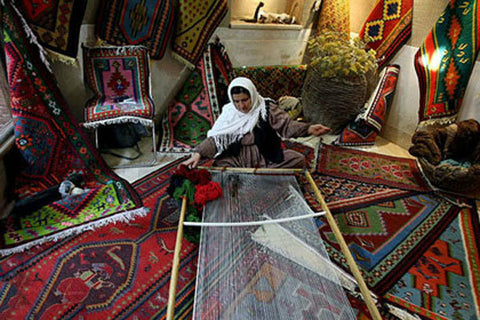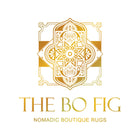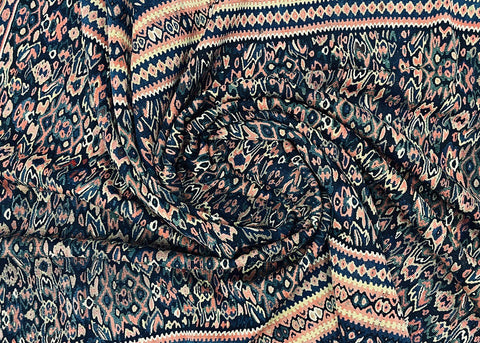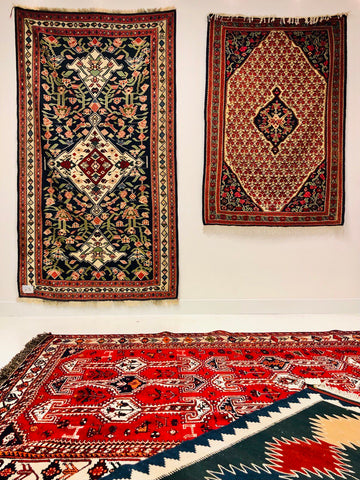A Deep Dive into Kurdish and Senneh Kilims: Where History Meets Connoisseurship
For centuries, Kurdish kilims have woven not just tapestries, but stories.
Each intricate pattern and vibrant hue whispers tales of nomadic life, cultural identity, and artistic evolution. These flat-woven wonders bridge the gap between academic intrigue and connoisseur's delight, offering a journey into a world steeped in tradition and captivating beauty.
Sanandaj, a renowned city in Kurdistan, boasts a rich history of handicrafts, including its famed carpets and kilims. These woven treasures, known for their unique weaving techniques and mesmerizing patterns, have captivated art lovers worldwide.
Handicrafts, like those crafted in Sanandaj, are tribute to generations of artistic and industrial talent. They are not just utilitarian objects but expressions of cultural heritage and artistic vision, passed down through time. Created with local raw materials, these intricate pieces embody the spirit and identity of their creators.
Unearthing the Roots: A Scholar's Perspective
The history of Kurdish kilims unfolds like a captivating epic, its origins reaching back centuries. Scholars believe these woven wonders were influenced by the artistic intermingling of neighboring cultures. For nomadic tribes, these kilims were more than functional pieces; they served as expressions of identity, imbued with symbols of nature, fertility, and tribal belonging. The dominance of geometric patterns, each meticulously chosen, further resonated with the Kurdish spirit.
A Unique Technique: Setting Kurdish Kilims Apart
Kurdish kilims utilize the slit-weave technique, a distinct feature that sets them apart from their knotted counterparts. This seemingly simple method, employing weft threads that interlock without knots, creates a flat and reversible surface. However, the exceptional skill and precision required to execute this technique highlight the deeply ingrained artistry within Kurdish culture.

The Allure of Senneh: A Connoisseur's Captivation
Nestled in the mountains of western Iran lies Senneh, a town synonymous with kilim excellence. Here, in the 19th century, a remarkable transformation took place. Weavers, inspired by the opulent designs of urban Persian rugs, began incorporating intricate motifs into their kilims. This fusion of tradition and innovation resulted in breathtaking pieces characterized by finer weaves, richer color palettes, and an artistry that captivated even the most discerning connoisseurs.
Senneh kilims stand out not just for their visual appeal but also for their technical mastery. The high knot count, meticulous attention to detail, and harmonious color combinations elevate them beyond mere floor coverings. They become conversation pieces, treasured possessions that exude sophistication and timeless elegance. Owning a Senneh kilim is not just an investment; it's an invitation to join a lineage of collectors who appreciate the artistry woven into every thread.
A Legacy Woven Through Time
Despite facing challenges like modernization and competition, the Kurdish kilim tradition endures. Contemporary weavers, armed with both ancestral knowledge and modern sensibilities, are continuously experimenting with new designs and techniques, ensuring this art form evolves for future generations and sure there is room for supporting these small communities in Kurdistan.
Whether you're an academic delving into the cultural significance of these woven tapestries or a connoisseur seeking a piece steeped in history and artistry, Kurdish and Senneh kilims offer an unparalleled journey. They are living examples of craft to a culture's enduring spirit, where every knot tells a story waiting to be unraveled.
So, the next time you encounter a Kurdish or Senneh kilim, take a moment to appreciate its artistry. Let your gaze wander across the intricate patterns, each a whispered echo of nomadic journeys and ancient traditions. In that moment, you'll be not just admiring a beautiful object, but experiencing a vibrant tapestry of cultural heritage and artistic expression.





